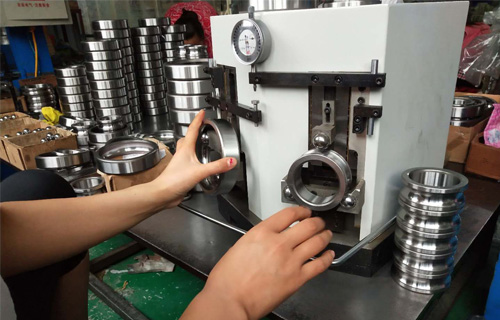
Dec . 25, 2024 04:17 Back to list
ceramic thrust bearing
The Role of Ceramic Thrust Bearings in Modern Engineering
In the dynamic world of engineering, the thrust bearing plays a critical role in managing axial loads. Among the various types of thrust bearings available, ceramic thrust bearings are gaining prominence due to their unique properties and advantages. This article will explore the features, benefits, applications, and future potential of ceramic thrust bearings in various industrial sectors.
Understanding Thrust Bearings
Before delving into the specifics of ceramic thrust bearings, it is essential to understand what thrust bearings are and how they function. Thrust bearings are a type of rotary bearing designed to support axial loads, i.e., forces that act parallel to the axis of the shaft. They ensure that the axial movement of the shaft is limited, thus providing stability and preventing wear on other components. Traditional materials for thrust bearings include metals like steel and bronze, which, while effective, have certain limitations concerning wear resistance, weight, and thermal stability.
Advantages of Ceramic Materials
Ceramics, particularly advanced ceramics, have emerged as a superior alternative to traditional materials. They are characterized by their hardness, low density, high resistance to wear, and superior thermal stability. These properties are particularly important in applications where high temperatures and corrosive environments are prevalent.
1. High Wear Resistance Ceramic materials, such as silicon nitride and alumina, exhibit exceptional wear resistance. This property extends the lifespan of thrust bearings and reduces the frequency of maintenance and replacement.
2. Lightweight With lower densities compared to metals, ceramic thrust bearings provide a significant weight advantage. This is especially crucial in aerospace and automotive applications where reducing weight can lead to improved fuel efficiency and performance.
3. Thermal Stability Ceramics perform well under high-temperature conditions. Unlike metals, which can lose strength and deform at elevated temperatures, ceramics maintain their structural integrity, making them ideal for applications involving heat.
4. Corrosion Resistance Ceramic materials are inherently resistant to chemicals and corrosion, providing an advantage in harsh environments, such as those found in chemical processing plants and marine applications.
Applications of Ceramic Thrust Bearings
ceramic thrust bearing

The benefits of ceramic thrust bearings make them suitable for various industrial applications, including
- Aerospace In the aerospace industry, where components must endure extreme conditions, ceramic thrust bearings are used in engines and landing gear systems for their lightweight and durably superior properties.
- Automotive High-performance vehicles increasingly use ceramic thrust bearings in transmissions and differentials, leading to improved efficiency and reduced weight.
- Industrial Machinery In heavy machinery and manufacturing equipment, these thrust bearings help extend the lifespan of costly equipment, reduce downtime, and enhance overall productivity.
- Medical Devices In precision medical devices, ceramic thrust bearings ensure reliability and longevity, which are critical in applications that require high precision and minimal maintenance.
Challenges and Future Prospects
Despite the numerous advantages of ceramic thrust bearings, there are challenges to their widespread adoption. The initial production costs can be outweighed when compared to traditional metal bearings. Additionally, the brittleness of ceramics can be a concern in applications that involve shock loads or extreme impacts.
However, ongoing research and development are addressing these challenges. Advances in manufacturing techniques, such as additive manufacturing and enhanced composite materials, are expected to broaden the application of ceramic bearings. As industries increasingly prioritize durability, efficiency, and weight reduction, the demand for ceramic thrust bearings is likely to grow.
Conclusion
Ceramic thrust bearings represent a paradigm shift in bearing technology, offering distinct advantages that cater to the demands of modern engineering. Their combined features of exceptional wear resistance, lightweight construction, and high thermal stability position them as a critical component in industries ranging from aerospace to automotive and beyond. As technology continues to advance and production methods improve, the future of ceramic thrust bearings appears promising, paving the way for more efficient and reliable machinery across various sectors. With continued innovation, ceramic thrust bearings may well become the standard in bearing technology in the years to come.
Latest news
-
Premium Deep Groove Ball Bearings | High Speed & Reliability
NewsAug.29,2025
-
Durable Scaffolding Clamps - Secure & Reliable Tube Connectors
NewsAug.28,2025
-
Common Failures in Thrust Ball Bearings and Solutions
NewsAug.22,2025
-
How Tapered Roller Bearings Can Take Shock Loads
NewsAug.22,2025
-
Angular Bearings in High-Precision Spindles
NewsAug.22,2025
-
The Impact of Misalignment on Cylindrical Roller Bearing Performance
NewsAug.22,2025
